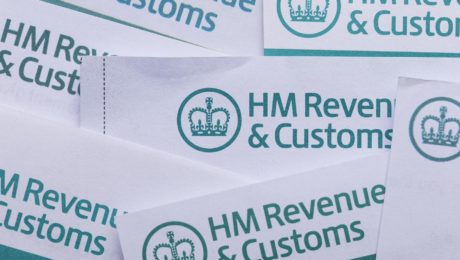Claiming tax relief for research and development is set to get harder as HMRC seeks to clamp down on the estimated £1.13bn of fraud and error in claims
From 8 August 2023, all businesses – or their R&D advisers – will have to fill in an Additional Information Form before they submit their company’s corporation tax return when submitting claims for R&D tax relief. There is a new HMRC online portal to submit claims.
The new process is designed to allow HMRC to quickly assess the validity of the claim.
Importantly, it will give the tax authority details of the R&D agent used by the business. This is to enable HMRC to assess the likely level of expertise involved in preparing the claim.
BDO warned that HMRC will use the data from this report to risk profile claims by size of claim and by business sector.
The new rules are also designed to address high levels of fraud and error in R&D claims where an estimated 17% of claims are fraudulent, HMRC reported in July. This was significantly higher than HMRC’s previously published estimate of 3.6%.
Carrie Rutland, innovation incentives partner at BDO said: ‘For the many businesses that are genuinely carrying out groundbreaking R&D, the changes being introduced may seem overly bureaucratic, particularly for large groups submitting multiple claims. However, given the high estimated levels of error and fraud associated with R&D claims, it’s no great surprise that HMRC is keen to clamp down on non-compliance.
‘Businesses involved in R&D will need to ensure they are clearly demonstrating their qualifying activities to HMRC. Failure to do so may mean they run the risk of an HMRC enquiry. The department has recently added 300 new officers to its R&D team which suggests it’s getting serious about stamping out error and fraud.’
Andrew Tall, corporate tax partner at accountancy firm HW Fisher, explained what needs to be included in the additional information form and how businesses can improve their chances of making a successful claim.
‘The additional information form requires extra measurements, thorough checks, and meticulous record keeping. Given the extra amount of information that firms will need to submit, we recommend that firms start preparing for their claim as far in advance as possible to allow themselves enough time to gather all the documents needed, and to avoid any costly, timely mistakes.’
The new requirements will be challenging for SMEs who do not usually need to provide this level of detail.
Stephanie Hurst, director at Monahans, said: ‘Many smaller enterprises who prepare their own R&D claims may not currently submit the level of information required by the additional information form, so these businesses are likely to be significantly impacted by the introduction of the new requirements.
‘It isn’t always cost effective for very small businesses to engage with an R&D adviser and quite often they will be preparing and submitting their own claims. Whilst they can continue to do this, we expect smaller businesses to be heavily impacted by the new requirements and the level of detail that will need to accompany their claims.’
What needs to be included in the additional information form?
Each additional information form will need to be signed by a named senior officer of the claimant company and must contain detailed information on the R&D project – including the name of the agent who has advised the company on compiling the claim.
The form must also include a breakdown of the costs across categories, the number of R&D projects carried out and describe some or all of the projects depending on the number of projects being submitted.
• for 1-3 projects, companies need to describe all the projects that are being submitted to the claim.
• for 4-10 projects, they need to describe sufficient projects to cover 50% or more of the qualifying expenditure with a minimum of three projects described.
• for more than 10 projects, they need to describe sufficient projects to cover 50% or more of the qualifying expenditure with a minimum of three projects described. If this would require details of more than 10 projects, then only 10 need be described.
Plan to merge separate R&D reliefs
The latest requirements are a prelude to further reforms to the UK R&D regime. Last month, the government unveiled draft legislation which proposes to merge the two current schemes – the Research and Development Expenditure Credit (RDEC) and the small or medium enterprises (SME) R&D relief.
The aim of the single R&D relief scheme is to achieve tax simplification, including having a single set of qualifying rules as well as control the overall cost to the Exchequer.
Rutland added: ‘Further reforms to merge the two current schemes into one from April 2024 may be the right approach, but there is a danger of going ‘too far too fast’. This could create more uncertainty and result in the UK becoming less attractive to inward investors.’
Rising interest rates and frozen tax thresholds will push over one million taxpayers into paying tax on their savings this tax year
In the 2023-24 tax year it is estimated that over 2.7 million individuals will pay tax on cash interest, up by a million in a single year, revealed analysis of HMRC figures by investment platform AJ Bell. In 2020-21 only 800,000 people paid tax on savings.
This year’s predicted total includes nearly 1.4m basic rate taxpayers, a figure which has quadrupled in just four years.
The figures underline the case for increasing the threshold for taxing savings income. AJ Bell estimated that around one in 20 basic rate payers will be paying tax on cash interest, rising to one in six higher rate payers and around half of additional rate payers.
Individuals pay tax on interest they earn on cash savings that exceeds the personal savings allowance, which currently stands at £1,000 for basic rate taxpayers and £500 for higher rate taxpayers. Additional rate taxpayers get no exemption and pay tax on all cash interest they receive.
In total, taxpayers are expected to hand £6.6bn to the Treasury this year from tax on the interest they earn.
AJ Bell is calling on the Chancellor to end the freeze on the personal savings allowance, which has been set at the same level since 2016.
Doubling the personal savings allowance would ensure households are not taxed on cash savings up to £20,000, with the top easy access account now paying 5%. Although, with some savings accounts offering 6%, a basic rate taxpayer could hit the personal savings allowance with around £16,700 in savings, or £8,400 for a higher rate taxpayer.
AJ Bell head of personal finance, Laura Suter, said: ‘These figures highlight just how many taxpayers are facing a tax bill for their savings interest this year – a huge leap when compared to last year. The combination of higher interest rates and people having shunned ISA accounts in recent years means that the number paying tax on their savings has more than tripled in the past four years.
‘Rising rates and a frozen Personal Savings Allowance means some individuals are being taxed despite having relatively modest pots of cash set aside for a rainy day. To add insult to injury, because inflation is so high, they aren’t even making a real return on their money – yet they are still being taxed.
‘The tax threshold is also contradictory to government policy in other areas. Interest rates have risen, in part to encourage people to save money rather than spend it and reduce demand in the economy to bring down inflation. So it doesn’t make much sense to tax people at the same time.’
Tax bills are paid either through self assessment, or deducted from income through a tax code adjustment. Many will not be aware that they owe the tax until HMRC sends them a letter informing them about a change to their tax code which means the money will be deducted through PAYE earnings.
‘Until a brown letter lands on their doormat some people won’t even realise they owe tax on cash interest’ warned Suter. ‘Those filling out a self assessment tax return will declare any savings interest, and subsequent tax due.’
‘For those taxed under PAYE, HMRC will calculate any tax due based on information sent to them by banks and building societies. It means many taxpayers will find there is a deduction made from their payslip each month, often before they’ve even realised they owe any money to the taxman.’
Following a trial, messages on the estimated time it will take to speak to an adviser were extended to more HMRC helplines from 4 July
The message will be played at the start of the call so taxpayers can make an informed choice about whether they want to hang on, use HMRC’s online services or call back another time.
During the trial period, it was clear that callers abandoned calls as the average wait time halved from 40 to 20 minutes. HMRC did not provide figures on how many callers refused to wait for a call handler and used alternative HMRC services to resolve queries, or called back later when lines could have been less busy.
Call wait time messages are based on the previous day’s average and will be included on the following helplines:
- child benefit;
- Construction Industry Scheme;
- employers;
- National Insurance;
- online services;
- tax credits; and
- VAT.
In the update in the latest stakeholder digest, HMRC said: ‘Expected call wait times are already given on the PAYE helpline. This has proved successful with a significant number of customers choosing to leave the queue and resolve their query elsewhere.
‘We’ve been able to take more calls from customers who still need to speak to us, and wait times reduced from 40 minutes at the start of the trial, to consistently below 20 minutes.
‘We want to be open and transparent about how long our customers can expect to wait and encourage the use of our digital services which are quicker and easier than calling us.’
Late last month HMRC announced plans to shut the self assessment helpline over the summer and transferred the 350 call handlers to other telephone services during the three-month closure. HMRC argued that the decision was taken to improve overall customer service levels which have come under fire as agents, accountants and the public have faced lengthy waits to access HMRC call centres.
HMRC is in the midst of a major back office IT upgrade, which involves moving more services to cloud-based platforms to improve response times.
HMRC service levels continue to decline as only 61% of callers managed to get through to an adviser by phone in the latest performance report
This marked a 10% decline in successful call connections from an average of 71% over the period April 2022 to March 2023. In the month HMRC received nearly four million calls with 2.9m wanting to speak to an adviser. The previous month HMRC said it had only received 3.23m calls.
On average it took nearly 21 minutes (20:59) to answer calls, while more than two thirds (69%) of callers waited more than 10 minutes to get through to an HMRC adviser.
In March 2023, the 61.3% of positive call connections marked a significant decline from 66.1% a year ago. In November last year, HMRC managed to answer 78.4% of calls, illustrating a worrying drop in service levels over the five month period.
Despite HMRC’s attempts to direct people to web services and webchat to answer queries, there is still very high demand for advice from HMRC staff.
There was also a fall in caller satisfaction with HMRC phone service declining by less than 4% to 75.7% although this figure includes all interaction with phone, webchat and digital services. However, this was the lowest score recorded in the last 12 months.
Recently HMRC said it was transferring call centre staff to handle the huge backlog of post as the performance report showed that 10% of post took more than 40 days to deal with.
ICAS chief executive Bruce Cartwright said: ‘Our members are increasingly telling us that they face severe delays and frustration when dealing with HMRC. Poor HMRC service levels are having a significant impact on taxpayers and businesses.
‘We and other professional bodies, continue to urge the government to invest more in HMRC to make sure they have enough resources to deliver at least an adequate service. Right now, this just isn’t the case.
‘Without an increase in funding and resources, HMRC seems unable to improve their service and support to taxpayers to acceptable levels.’




